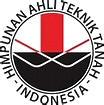Analisis Keterkaitan Antara Aktivitas Kendaraan Bermotor dengan Tingkat Kebisingan: Studi Kasus di Jalan Gatot Subroto, Kota Palu
DOI:
https://doi.org/10.22487/renstra.v5i1.567Keywords:
noise pollution, SLM, vehicles, vehicle volumeAbstract
The elevation of mobility in Palu has evolved into a new noise issue. Noise from motorized vehicles has quite an impact on the tranquility of areas that directly intersect with the highway. Gatot Subroto Axis Road is an instance of a congested road as public facilities such as educational institutions take the crowd of the area. The study aims to analyze the relationship of vehicle activities toward noise level at Gatot Subroto. The research method uses field measurement by a sound level meter (SLM), tripod, and counter. Noise sampling standards refer to SNI 8427:2017 regarding measuring environmental noise levels. Data was collected for one day on weekdays and weekends with three take times at three sampling points. Noise level analysis is carried out using frequency distribution. The next data analysis is to look for the equivalent noise level or LAeq. The noise level points varied between 71,6 dBA-84,02 dBA. The traffic volume reached a peak at 853. The p-value was 0,72 which was above 0,05. The regression test was Y=0,0048x+72,904, and R2 showed 0,15 points, which means that 15% of the noise level was affected by traffic volume. In conclusion, the average noise level at Gatot Subroto Axis Road exceeded the quality standards set according to the Decree of the Minister of State for the Environment No. 48 of 1996, which is 55 dB(A). Despite no significant difference in noise levels on weekdays and weekends based on the t-test, the noise level is affected by traffic volume. Noise from motorized vehicles has quite a big impact on the tranquility of areas that directly intersect with the highway. he limitation of this research is the limited amount of data due to the small number of research points and the insufficient number of days, so further research is needed.
Downloads
References
A.I.N.K. Karlinda, M. Hustim, and R. Irmawaty, “Aplikasi Model ASJ-RTN 2008 Pada Lalu Lintas Heterogen Untuk Tipe Jalan 4/2 UD”, Prosiding Forum Studi Transportasi Antar Perguruan Tinggi, vol. 2, p. 1, 2018.
F. Rosariawari and M. Almadhany, “Pemodelan Kebisingan Lalu Lintas Berdasarkan Volume Lalu Lintas Menggunakan Multiple Linear Regression Pada Jalan Kedung Cowek Surabaya”, EnviroUS, vol. 2, no. 1, p. 101, 2021.
M. Balirante, L. Lefrandt, and M. Kumaat, “Analisa Tingkat Kebisingan Lalu Lintas di Jalan Raya Ditinjau Dari Tingkat Baku Mutu Kebisingan Yang Diizinkan”, Jurnal Sipil Statik, vol. 8, no. 2, p. 1, 2020.
M.R. Zikri, “Analisis Dampak Kebisingan Terhadap Komunikasi dan Konsentrasi Belajar Siswa Sekolah Pada Jalan Padat Lalu Lintas”, Jurnal Teknologi Lingkungan Lahan Basah, vol. 3, no. 1, p. 2015.
D. Rusjadi, Konsep Dasar Akustik, Yogyakarta: Graha Ilmu, 2015.
Direktorat Jenderal Bina Marga, Manual Kapasitas Jalan Indonesia (MKJI), Jakarta: Departemen Pekerjaan Umum, 1997.
SNI 8427 2017, Pengukuran Tingkat Kebisingan Lingkungan, Jakarta: Badan Standarisasi Nasional, 2017.
Nuryadi, T.D. Astuti, E. Utami, M. Budiantara, Dasar-dasar Statistik Penelitian, Yogyakarta: Gramasurya, 2017.
KEP48/MELH/1996/25, Baku Tingkat Kebisingan, Jakarta: Menteri Negara Lingkungan Hidup Nomor: November, 1996.
N.R. Nurasrin, “Analisis Tingkat Kebisingan Pada Kawasan Sekolah Dasar di Makassar”, Jurnal Purifikasi, vol. 17, no. 2, p. 59, 2017.
T. Hamsi, N. Rauf, and D. Tahir, “Evaluasi Tingkat Kebisingan Pada SMK Darussalam Makassar”, Gravitasi, vol. 20, no. 1, p. 24, 2021.
V.S. Bachtiar, R. Afrianita, and A. Zamzamy, “Evaluasi Tingkat Kebisingan Kawasan Selatan Universitas Negeri Padang”, Jurnal Dampak, vol 15, no. 1 p. 7, 2018.
F.A. Alsey, “Analisis Tingkat Kebisingan Akibat Arus Lalu Lintas di Permukiman Kota Pontianak (Studi Kasus: Permukiman Sungai Raya Dalam Kecamatan Pontianak Tenggara)”, Jurnal Teknologi Lingkungan Basah, vol. 5, no. 1, p. 26, 2017.
Y. Carolina and O. Ivansyah, “Sebaran Kebisingan Kawasan Kampus Pada Hari Kerja dan Hari Libur”. Prisma Fisika, vol. 9, no. 3, p. 258, 2021.
F. Basri and M. Harum, “Analisis Volume Lalu Lintas Pada Ruas Jalan Arteri (Batas Kabupaten. Majene-Polewali Mandar)”, Bandar: Journal Of Civil Engineering, vol. 2, no. 1, p. 32, 2020.
K. Shaaban and A. Abouzaid, “Assessment of Traffic Noise near Schools in a Developing Country”, Transportation Research Procedia, vol. 55, p. 1, 2021.
Z.K. Rasullia, C.C. Budi, and H. Wibisana, “Analisa Kebisingan di Ruas Jalan Arteri Kota Surabaya Serta Korelasinya dengan Nilai Volume Lalu Lintas”, Jurnal Aplikasi Teknik Sipil, vol. 18, no. 2, p. 19, 2020.
J.D. Ansusanto, Prediksi Tingkat Kebisingan Kendaraan Bermotor Akibat Pertumbuhan Lalu Lintas, Yogyakarta: Universitas Atma Jaya, 2006.
A. Novikov, O. Sumarukova, A. Rodionov, N. Lagutina, and M. Barsukova, “The Problem of Evaluating the Noise Pollution of the Moscow Central Circle”, IOP Conference Series: Earth and Environmental Science, vol. 979, no. 1, p. 1, 2022.
S. Syaiful and N. Wahid, “A Study of the Density of Motor Vehicles in Front of Bunda Hospital Margonda Depok Against Noise Pollution”, The Spirit of Society Journal, vol. 3, no. 2, p. 48, 2020.
E.S. Karden, Pengelolaan Lingkungan Hidup, Jakarta: Djambatan, 2003.
Tim Penyusun, Mitigasi Dampak Kebisingan Akibat Lalu Lintas, Jakarta: Departemen Pekerjaan Umum, 2005.
Tim Penyusun, Pedoman Perencanaaan Teknik Bangunan Peredam Bising, Jakarta: Departemen Pekerjaan Umum, 1999.
G. Martínez-Vilavella, J. Pujol, L. Blanco-Hinojo, J. Deus, I. Rivas, C. Persavento, J. Sunyer, and M. Foraster, “The Effects of Exposure to Road Traffic Noise at School on Central Auditory Pathway Functional Connectivity”, Environmental Research, vol. 226, p. 1, 2023.
Editorial Team, “Noise Pollution: More Attention is Needed”, The Lancet Regional Health – Europe”, vol. 24, p. 1, 2023.
R. Widiastuti, “Studi Ergonomi Kognitif untuk Mengetahui Penurunan Produktivitas Kerja Akibat Kenaikan Tingkat Kebisingan”, Jurnal Teknologi 4, no. 2. p 136, 2011.
Downloads
Published
How to Cite
Issue
Section
License
Copyright (c) 2024 REKONSTRUKSI TADULAKO: Civil Engineering Journal on Research and Development

This work is licensed under a Creative Commons Attribution 4.0 International License.







 This work is licensed under a
This work is licensed under a 


